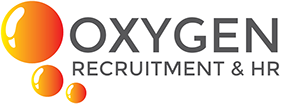Breaking Boundaries: Innovative Performance Management Techniques
In the dynamic landscape of Australian businesses, traditional performance management methods are being reimagined to adapt to the evolving needs of organisations and their employees. Australian companies are pioneering innovative approaches to assess, develop, and maximise employee performance, driving productivity and engagement to unprecedented levels. Let’s explore some of the groundbreaking performance management techniques being utilised by Australian companies, supported by research and data from Australia.
- Continuous Feedback Loops:
Some companies are adopting alternatives to the annual performance review. Australian companies are embracing continuous feedback loops, providing real-time insights and coaching to employees. Research by the Australian Human Resources Institute (AHRI) indicates that regular feedback leads to higher levels of employee engagement and performance. Some companies are utilising digital platforms and mobile apps to facilitate ongoing feedback exchanges between managers and employees, fostering a culture of transparency and continuous improvement.
- Data-Driven Insights:
Australian companies are leveraging data analytics to gain deeper insights into employee performance and behaviour. By analysing metrics such as productivity, collaboration patterns, and performance trends, organisations can identify areas for improvement and tailor development strategies accordingly. Research by Deloitte Access Economics highlights the role of data-driven performance management in driving organisational effectiveness and competitiveness in the Australian market.

- Goal Alignment and Cascading Objectives:
Effective goal setting is essential for driving employee motivation and alignment with organisational objectives. Some Australian companies are implementing cascading objectives frameworks, ensuring that individual goals are aligned with team and organisational priorities. Studies by the Australian Graduate School of Management (AGSM) emphasise the importance of goal alignment in driving employee engagement and performance.
- Strengths-Based Approaches:
Recognising and leveraging employees’ strengths is a key driver of motivation and performance. Strengths-based performance management techniques, focusing on developing and harnessing employees’ unique talents is one approach to performance management highlighted in research by Gallup. It underscores the impact of strengths-based approaches on employee engagement and organisational success, with strengths-focused teams experiencing higher levels of productivity and profitability.

- Agile Performance Management:
In an era of rapid change and uncertainty, some businesses are embracing agile performance management methodologies. Agile principles, such as iterative goal setting, continuous feedback, and adaptive planning, enable organisations to respond swiftly to shifting priorities and market dynamics. Research by the University of Melbourne’s Centre for Workplace Leadership highlights the effectiveness of agile performance management in promoting employee autonomy, collaboration, and innovation.
In conclusion, Australian companies are at the forefront of innovation in performance management, leveraging technology, data analytics, and agile methodologies to drive employee engagement, productivity, and organizational success. By embracing continuous feedback loops, data-driven insights, goal alignment, strengths-based approaches, and agile methodologies, Australian businesses are revolutionising the way they manage and develop their talent. As research continues to inform best practices in performance management, Australian companies are poised to unlock the full potential of their workforce and achieve sustainable growth in a competitive market landscape.
Sources:
- Australian Human Resources Institute (AHRI)
- Deloitte Access Economics
- Australian Graduate School of Management (AGSM)
- Gallup
- University of Melbourne – Centre for Workplace Leadership
